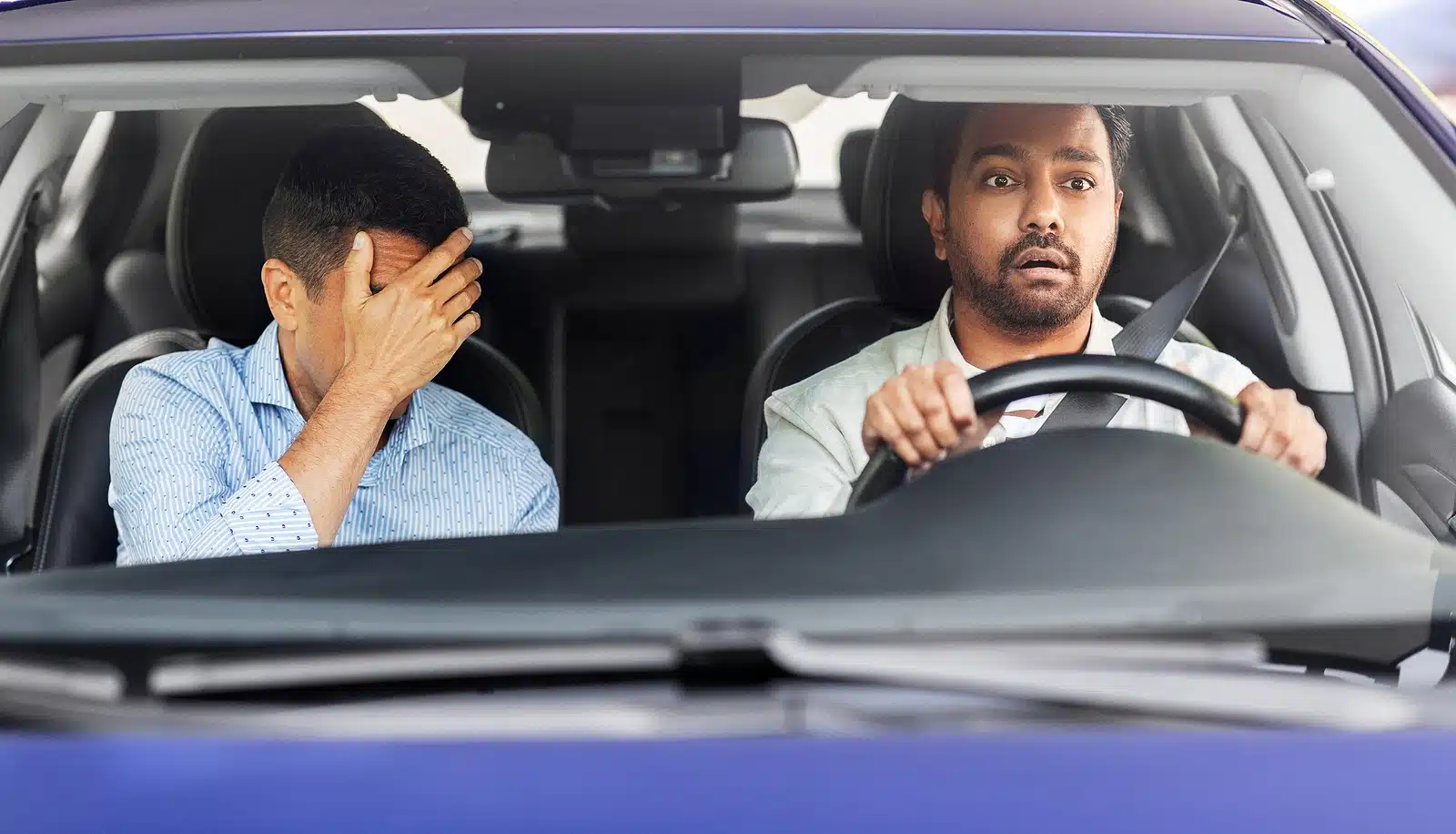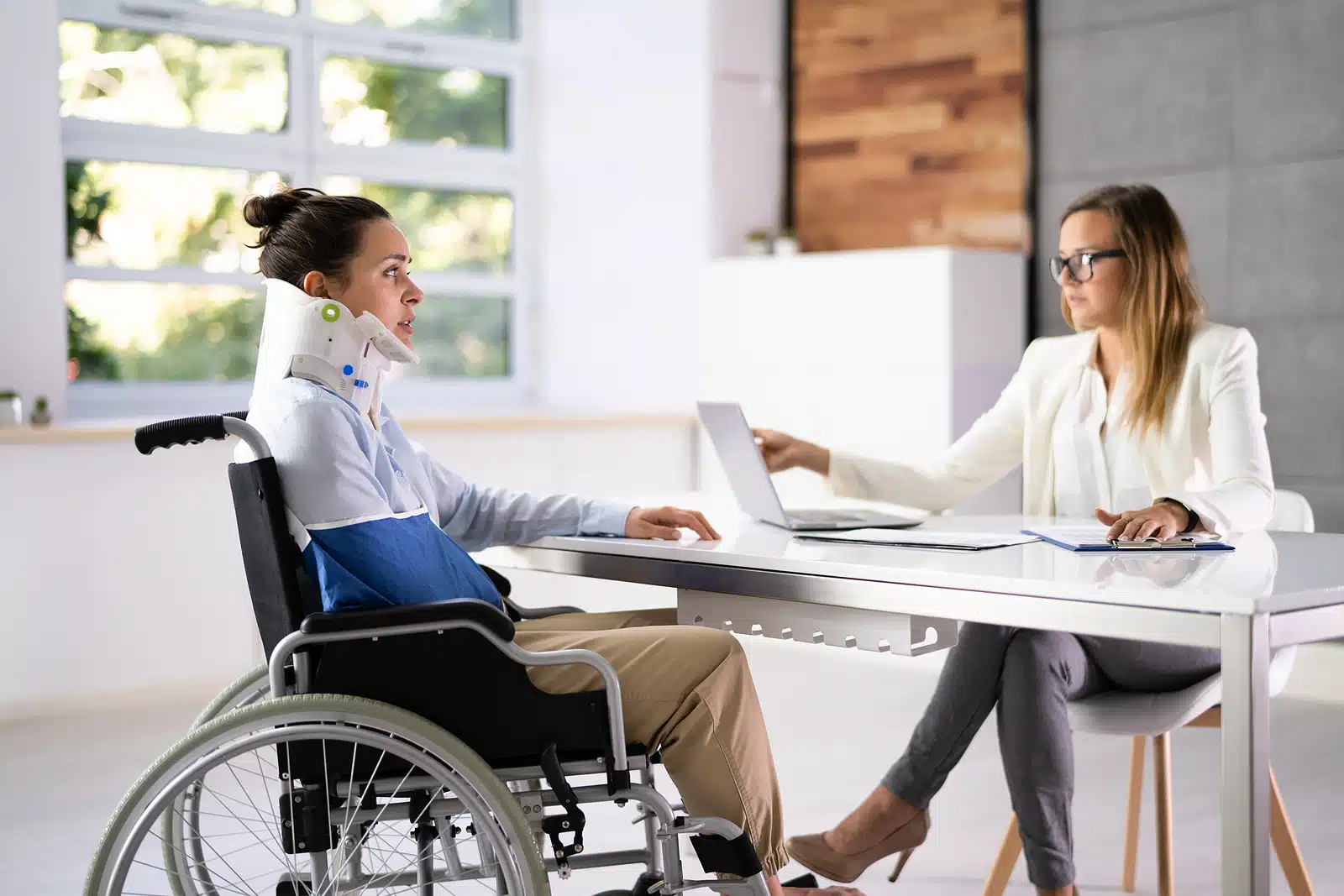Does Tensing Up Before an Accident Help or Hurt?

To Tense Up and Brace For Impact Or To Relax?
Over the years, There have been debates about whether or not tensing up before impact can help your body adjust better to the injuries you may sustain. Some insist that tensing up may mean more significant injuries, and if you can relax before impact, you may be better off.
These theories don’t always apply as you can’t always see an accident as it happens, or it may happen with little to no time to react, making the debate irrelevant.
What does the science say? Read on to learn more.
The Science Behind Bracing for Impact
According to the National Library of Medicine, “pre-collision behavior such as bracing or muscle tension is expected to influence the occupant dynamics during a collision.” However, it goes on to discuss that the studies that have been completed involve controversial elements such as volunteer tests of cadaver testing, providing limited information regarding injuries that could be sustained, and how bracing for impact may help.
A study completed in 1968 through the Society of Automotive Engineers found that 44% of the total kinetic energy was transferred to the lower extremities when an effective three-point seatbelt was used. It appears that the lower extremities taking a large portion of the impact provided effective energy management, allowing for less impact on the upper extremities and potential brain damage.
Though it doesn’t seem that there are significant or definitive black-and-white results for this testing and similar studies, it states that “the findings of the volunteer and driving simulator studies suggest that magnitude of muscle forces developed through bracing behavior are capable of altering the pre-collision posture of the occupant in addition to pre-loading the joints and the long bones of the body.”
Association for the Advancement of Automotive Medicine
A study done in 2006 and updated in 2008 by the Association for the Advancement of Automotive Medicine provides further insight into the idea that bracing for impact may have a beneficial component to injuries sustained. It discusses that though the upper body may experience a slight decrease in injuries sustained through bracing for impact, the lower body may actually experience a slight increase in injuries sustained.
It is important to note, however, that though broken lower extremities or other complications can be painful, shielding the upper body where vital organs and the brain are by bracing may be of the most benefit to those in a car accident.
Again, although there are no definitive or black-and-white answers, it may be best for those who can see an accident in the making to brace for impact.
Ideas to Help Should You Choose to Brace for Impact
Some of the ways studies show that bracing for impact can be beneficial are pushing your back to the seat and pressing your head back to the headrest. Another aspect to consider is for the driver to place their foot firmly on the brake pedal and push their back to the back of the seat, and the passenger or other occupants can push their feet to the floor and push their backs to the back of the car seat.
These tips are most beneficial if the accident involves a head-on collision. If the driver or occupants see that they are potentially going to be rear-ended, these tips may not benefit them as much as they would like.
It’s important to note that turning your head or bracing for impact by placing your feet on the dash or front of the vehicle may lead to extensive injuries to the spine, neck, or other extremities. It’s also said that by tensing muscles throughout your body before impact, you may be able to shield organs from the brunt of the impact, although not with 100% effectiveness.
What to Do Following an Accident
First and foremost, you should determine whether or not you or other occupants in the vehicle need medical assistance and call for help. Suppose you feel that no serious injuries have resulted. In that case, it’s still best to report the accident, follow the next steps, and complete a full medical exam to ensure that serious injuries aren’t present without your knowledge.
The next vital step to take is to gather documentation of the accident. Gather pictures of the cars involved, the roadway, and other pertinent information. Get the contact and insurance information from the other drivers involved in the crash and call for help if they need emergency care.
Contact the authorities to report the accident. Gather witness information, if possible, including their contact information, as you may need this in the future.
Once these steps have been taken, receive a complete medical exam as soon as possible. Soft tissue damage, such as a result of a concussion, may have occurred, and there could be severe injuries present that are not yet showing up with symptoms. By learning of these injuries right away, you may be able to ward off serious complications down the road by treating them immediately and not allowing them to worsen with time.
Your Relentless Advocate
Car accidents happen every day and can still affect our lives differently. Some may have minimal injuries and inconveniences, while others present devastating results.
You don’t have to navigate the aftermath of an accident alone.
Lean on the experience and professionalism of your local trusted personal injury attorney to oversee communication with the other drivers and insurance agencies, rely on them to help you gather pertinent details regarding the accident and more.
Contact our office today at (720) 707-0870 to learn how we can best assist you.





